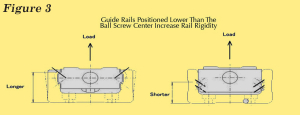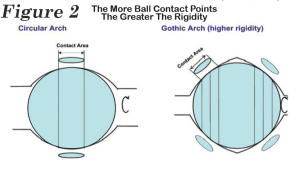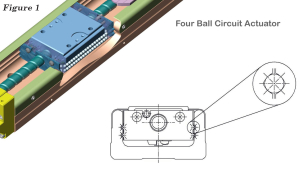
Travel Tips: Selecting a linear actuator
By Naoki Yamaguchi
Motion Control Power Transmission actuator LinearWhen choosing a linear actuator of four feet or fewer, consider load capacity, precision, rigidity and sizing factors.


Whether for packaging, life sciences, office equipment or factory automation, smooth motion, fast accelerations and a high degree of accuracy are hallmark requirements for linear movement actuators. Increasingly, miniaturization has added the additional requirement of compactness. One system that can meet all of the above requirements in its conversion of motor torque to linear thrust is the single-axis ball-screw actuator.
Traditionally, equipment manufacturers have designed and assembled their own custom ball-screw actuators, but many companies have recognized the advantages of purchasing an off-the-shelf system solution. Choosing the right system for an application, however, requires that actuator systems be carefully analyzed. Comparisons of the design and sizing of components such as the slide block, raceway, bearing, guide rail, ball-screw, nut and housing materials are critical. They all factor into actuator performance.
Load Capacity
Load capacity is the first consideration when choosing an actuator of four feet or fewer. It depends on the size of the recirculating steel balls that roll between the block and the raceways in the guide rails, as well as the number of balls in contact with the raceways and the manner in which they make contact. One way to meet load capacity is by increasing the size of the ball screw and guide rails. Another way, which does not increase the overall size of the actuator, is to increase the ball circuits.

Most standard ball-screw actuators have one set of recirculating balls on either side of the block (Figure 1). Doubling the number of ball circuits to two on either side of the block doubles the load capacity of the actuator. In the case of actuators of up to about four-foot rail travel, an example of maximum load for a standard 1,380-mm rail length with two ball circuits is 37 kilonewton; with four ball circuits, it’s 74 kilonewton.
On the low end of the actuator size range, an actuator with a 100-mm-long rail with two ball circuits can be expected to have a load capacity of 3.945 kilonewton whereas with four ball circuits its load is 7.89 kilonewton.
Precision
Actuator systems are generally offered in two or three grades or levels of accuracy. Commercial grade is the lowest while the next is high or standard grade; precision grade is the highest. To compare systems’ levels of accuracy, one cannot assume all manufacturers’ lowest-to-highest grades have comparable accuracies. Therefore, it becomes necessary to compare their published ranges for positioning repeatability, positioning accuracy, running parallelism, backlash and starting torque.
